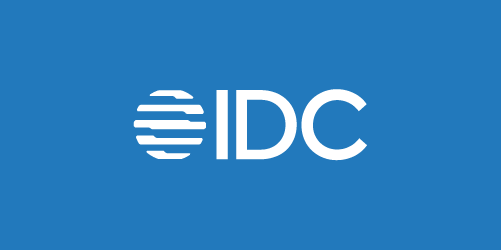The concentration on generative AI puts data quality into sharp focus. Grounding LLMs with trusted private data and knowledge is more essential than ever.
Focus on data quality for AI
With generative AI (GenAI) applications taking center stage, there's a heightened focus on data quality for AI.
Yet ensuring data quality for AI – in terms of completeness, compliance, and context – is fraught with challenges. Our recent survey on GenAI adoption, 300 enterprises revealed that data quality is one of the top concerns for companies building AI apps, as shown below.

Top concerns about deploying GenAI apps
AI teams recognize the critical role data plays in building trust for generative AI within businesses. Leveraging Retrieval-Augmented Generation (RAG) frameworks to ground Large Language Models (LLMs) with reliable internal data and knowledge is critical.
Get the complete report Enterprise Data Readiness for GenAI for free.
Challenges of data quality for AI
So, what makes data quality for AI so challenging? There are 3 main culprits:
1. Fragmented data: The nemesis of GenAI
Enterprise data is often siloed in dozens of systems. Customer data, for example, is typically fragmented across CRM, billing, customer service, interaction management, call recordings, and the list goes on. This fragmentation makes it incredibly difficult to serve a real-time and reliable customer view to the underlying LLMs powering customer-facing GenAI apps.
To overcome this challenge, you'd need a robust data infrastructure capable of real-time data integration and unification, master data management, data transformation, anonymization, and validation.
The more fragmented the data, the steeper the climb towards achieving data quality for AI.
2. Data lost in translation: Due to low-quality metadata
Imagine a brilliant translator struggling with instructions in a cryptic language. That's essentially what happens when generative AI apps encounter data with sparse metadata. Metadata, the data that describes the data, acts as a crucial bridge between your organization's information and the LLM's ability to power your generative AI apps.
Rich metadata provides the context and understanding that your enterprise LLM needs to effectively utilize both your structured and unstructured data to generate more accurate and personalized responses. Unfortunately, many organizations face the challenge of maintaining stale data catalogs. The dynamic nature of today's data landscape makes it difficult to keep metadata current.
This lag results in a communication gap between your data and your LLM, ultimately hindering the quality and effectiveness of your generative AI initiatives.
3. Data privacy vs insights: A balancing act with data quality for AI
Data privacy regulations are necessary safeguards for sensitive information, but they can damage data quality. While anonymization and access controls are crucial for compliance, these measures can hinder the maintenance of the referential consistency of the data.
Referential consistency refers to the accuracy of relationships between different data points. When anonymization techniques, like static or dynamic masking, disrupt these relationships, the data quality suffers. Masked data is less reliable and meaningful for both users and LLMs.
Essentially, the very measures designed to protect data privacy can inadvertently undermine the quality of the data itself, and prevent your AI RAG tools from extracting valuable insights.
4. Data quality in isolation: Not great for cross-functional collaboration
Traditionally, data quality initiatives have often been lone efforts, disconnected from core business goals and strategic initiatives. Such isolation makes it difficult to quantify the impact of data quality improvements to secure the necessary investment. As a result, data quality struggles to gain the crucial attention it deserves.
Generative AI apps rely heavily on high-quality data to minimize
AI hallucinations and generate more accurate and reliable results.
Data lakes create a quality crisis for GenAI
Traditional approaches leverage ETL/ETL and data governance tools to ingest multi-source enterprise data into centralized data lakes, which enforce the necessary data quality and privacy controls.
Despite the advantages of data lakes in scalability, accessibility, and cost, there are also significant data governance risks and limitations in using data lakes for generative AI, including:
-
Data protection
The risks of sensitive data leaking to the LLM or to unauthorized users are substantial. -
High cost
Cleansing and querying the data at high scale are compute intensive, escalating the associated data lake costs. -
Analytics focus
Data lakes are less appropriate for real-time conversational generative AI use cases that require fresh, clean, complete, and compliant data.
Read more about the pros and cons of using data lakes in RAG for structured data.
A paradigm shift is needed to make data AI-ready
At K2view, we propose a paradigm shift for making data AI-ready: Micro-Database™ technology.
Imagine a data lake for one entity – a dedicated Micro-Database for each customer, employee, or product, for example. This "data lake of one" is continuously:
- Synced with your source systems
- Cleansed according to your AI data governance policies
- Protected and compliant with data privacy laws
Millions of these Micro-databases, instantly accessible by RAG queries, empower your GenAI apps to personalize and ground your LLM with the highest quality, AI-ready data.
But the solution for making data ready for AI extends beyond technology.
Organizations must prioritize data quality by establishing KPIs directly linked to generative AI success. Building multi-disciplinary GenAI teams that include data quality engineers fosters collaboration and ensures all aspects, from data preparation to application performance, are aligned.
Learn how the K2view RAG tool, GenAI Data Fusion, is setting the standard
for data quality for AI with complete, compliant, and contextual data.
















